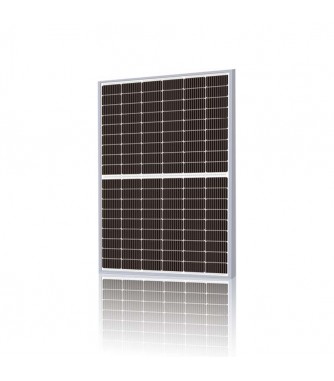Here are 5 things you may not know about solar power as we continue to commit to at least 2 gigawatt-peak (GWp) of solar power by 2030.
1. The climate is heat does not always mean more solar energy than
However, heat is not useful for photovoltaic (PV) panels, which convert sunlight directly into electricity. This is different from solar thermal, which uses the sun's heat to produce hot water.
In fact, solar panels are less efficient as they get hotter. Therefore, the rooftop heating system is designed to be able to ventilate to cool the solar module. For example, by keeping a distance between the solar panel and the actual roof (which is hot even on a hot day).
Innovation is key when it comes to improving Singapore's position in solar deployment. Roofs are used for various purposes such as water tanks, elevators, air conditioning systems, parking spaces and even recreational areas such as gardens. Therefore, we must carefully manage these competing factors.
Regarding the new installation of solar panels 450w, a trial of the new solar shading technology has been launched at Sentosa's Siloso Skywalk. Elsewhere, you can find solar installations in various forms, from water (such as the 60 MWp Sembcorp Tengeh Floating Solar Farm) to temporary industrial sites (under the SolarLand JTC program).
5. The solar system disturbs the neighbors less. Solar flares occur when sunlight shines on the surface of the sun. However, solar panels are designed to absorb light - meaning they let in more light than standard glass windows.
The reflection of the sun also happens only if the sun is in a certain direction and if the house is in the way of reflection. It can be controlled in these conditions as the solar panel can be positioned to reduce the heat. So the chances of your home being affected are minimal!
Solar in Singapore has grown significantly in recent years, from 0.4 MWp in 2008 to 1 GWp in Q2 2023.
to buy electricity from the grid. We expect that many customers, such as commercial and industrial (C&I) owners and landowners, will be more receptive to installing solar.
EMA has taken important measures, such as introducing a legal framework to support the installation of solar installations. Our approach is to encourage the use of sustainable energy panels at reasonable energy prices.
The power of photography is one of the fastest growing forces in our country, but also in the rest of the world. However, scientists reached a new level of shock when they discovered the first liquid in history. It's a groundbreaking American invention, to say it's surprising (you'll understand by now).
These solar panels are unlike anything you've ever seen: look at them. These are light poles that are installed in water sources such as ponds, lakes, and even ponds, as opposed to roofs or ground systems.
The amount of N type solar panel depends on the intensity of sunlight falling on a given area, also known as "irradiance". Solar radiation is reduced when sunlight is blocked by clouds or urban environments.
Solar panels produce the most solar energy when the sun is directly in front (aka the midday sun) and the least in the early morning and evening when the sun is low in the sky.
Interestingly, solar noon in Singapore is 1:00 PM (not noon), which is the average solar time between 7:00 AM and 7:00 PM.




